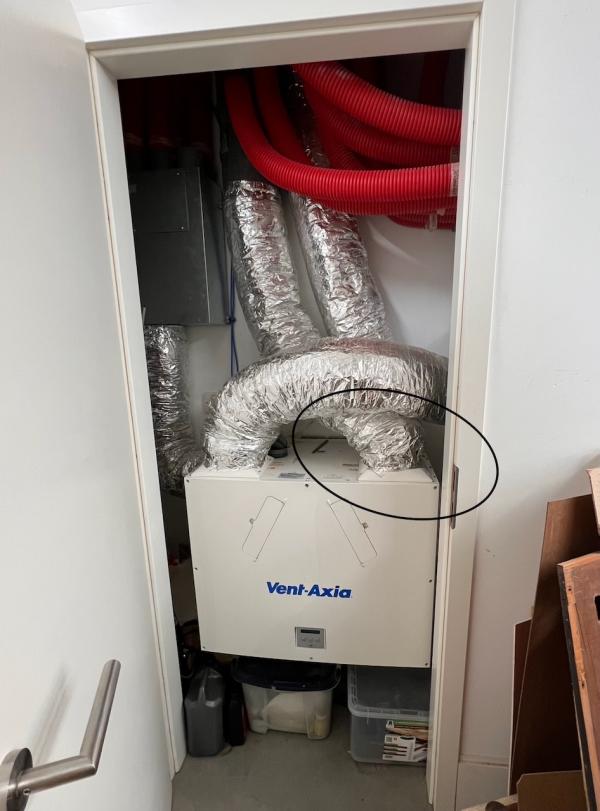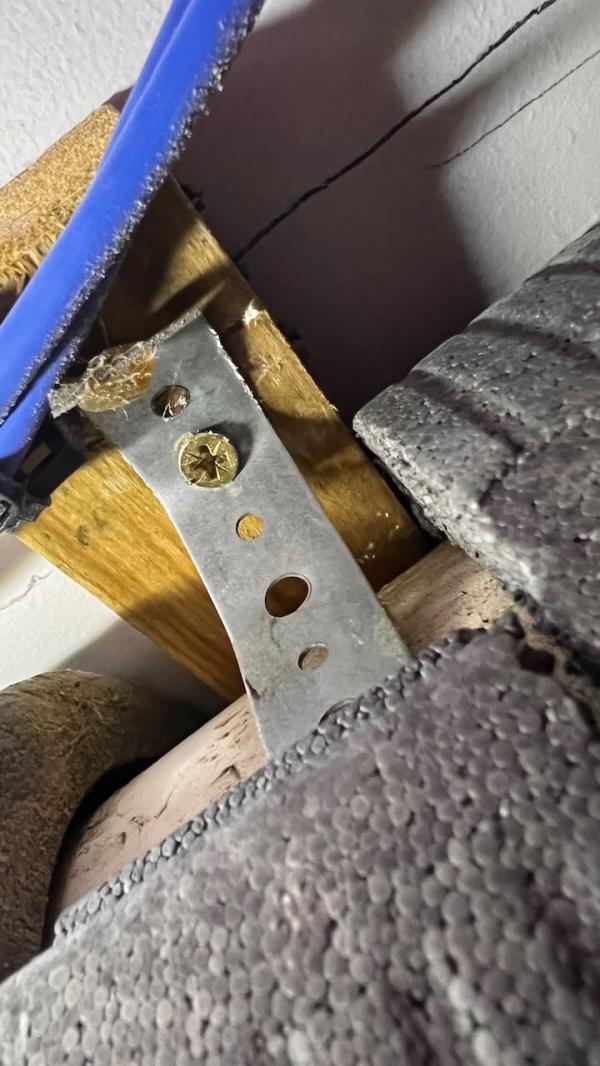| Home |
| Green Building Bible, Fourth Edition |

|
These two books are the perfect starting place to help you get to grips with one of the most vitally important aspects of our society - our homes and living environment. PLEASE NOTE: A download link for Volume 1 will be sent to you by email and Volume 2 will be sent to you by post as a book. |
Vanilla 1.0.3 is a product of Lussumo. More Information: Documentation, Community Support.


Posted By: Simon StillThe remaining question is how to better insulate the visible ducting (the flexi duct is clearly the weakest point) given what you can see. What I've done seems to be standard - I've not seen any better solutions for it.Flexible ducting isn't standard - or at least it isn't good practice. I'd replace at least the external supply and extract ducts (where the condensation risk is highest) with well-insulated rigid ducts.
Posted By: Mike1Agreed. Our system uses preformed insulated ducting (Ubbink) but yes, replacing the intake and exhaust ducts with something better is a good idea. Ideally you would establish the source of the condensation first, of course.Posted By: Simon StillThe remaining question is how to better insulate the visible ducting (the flexi duct is clearly the weakest point) given what you can see. What I've done seems to be standard - I've not seen any better solutions for it.Flexible ducting isn't standard - or at least it isn't good practice. I'd replace at least the external supply and extract ducts (where the condensation risk is highest) with well-insulated rigid ducts.


Posted By: Simon Stillflexi pipe for the final connections
Posted By: Simon StillThat's true, but when we self installed 8ish years ago, it seemed to be - every install I can remember seeing a pic of back then had flexi pipe for the final connections.Yes my feeling too. My install of 10 years ago has just flexi duct and I cannot remember being offered or seeing available the rigid duct you can get to day.
Posted By: borpinOur install was done eight years ago and the insulated duct was definitely available then.Posted By: Simon StillThat's true, but when we self installed 8ish years ago, it seemed to be - every install I can remember seeing a pic of back then had flexi pipe for the final connections.Yes my feeling too. My install of 10 years ago has just flexi duct and I cannot remember being offered or seeing available the rigid duct you can get to day.
Last year I fitted a new MVHR unit. In the process I installed an in-line coarse filter to remove some of the larger particles in the air (which works well). This is a metal box from VentilationLand. The trouble is, there was a massive amount of condenstaion on the soutside of this box when the air is cold!Hmm, all PH-certified units have to run continuously all the time. No closing inlets or reverse defrost cycles etc. They're all also required to be properly insulated. It may be a case of you get what you pay for.
Because this is a Komfovent unit, it does not need to be turned off at low temperatures as there is no risk of freezing (the type of heat exchanger) so it runs even in these low temperatures.
Posted By: Simon StillI've found some extract terminals aimed at kitchens - I guess I could just replace the grease filter with a dust filter in these and replace often https://www.paulheatrecovery.co.uk/product/vf-filtered-kitchen-extract-terminal/We have one of those kitchen terminals. The filter is just a square piece of foam that fits in the metal case. I initially relied on the cooker hood but after a couple of years I noticed that there was dust/dirt/whatever on the inside of the right-angle bend above the normal kitchen extract terminal so I bought one of the filtered ones and a box of filters and that seems to have solved the problem nicely. The filters are very easy to wash so can be used several times. I've never found any dirt behind any of the other extract terminals.
(also, I didn't bother with this in my kitchen - I'm relying on a really good Berbel recirculating hood to take out grease before it reaches the MVHR extract. Which I think is working.)
Posted By: Simon Still@borpin why did you replace your unit?Because one of the fans was failing again and yes, expensive, but I was throwing good after bad.
Posted By: djhHmm, all PH-certified units have to run continuously all the time. No closing inlets or reverse defrost cycles etc. They're all also required to be properly insulated. It may be a case of you get what you pay for.True, wasn't as much a thing 11 years ago when I did all the investigation (look back here 11 years ago). PH also wasn't really something widely available - yes the assessment was around but not much else unless you paid a very high price. In the 3 years to your 8 year point, things changed markedly. (not that I'd expect you to agree).
Posted By: borpinIn the 3 years to your 8 year point, things changed markedly. (not that I'd expect you to agree).I I don't know what was available three years before I bought, so I'll take your word for it

Posted By: Simon StillIn cold weather we get some condensation on top of the machineLots of focus on the pipes, but you said it was on the top of the machine. Is the rockwool insulation in the flexible duct wet at the bottom so it is wicking down onto the unit? If so, it may be difficult to dry that out, so it would need replacing.
Posted By: Simon StillSo the flexible pipe I've used is clearly a poor solution, but it's going to be very difficult/awkward to use rigid pipe here.Looking at the Photo, I think you have plenty of space to do so. 45°off the unit across to under the vertical and 45° back to vertical.
Posted By: Simon Stillpre Insulated semi rigid plastic? what are those?The ones I have are Ubbink; I've mentioned them before. https://www.ubbink.com/int/products/ventilation/aerfoam-insulated-mass-flow-ductwork/ I think Zehnder also have some; there may be others.
My understanding is that you only want an attenuator on the supply from the unit to the house - not on the external supply extract or the internal extract. And they're expensive. So that doesn't really help.Ah, yes usually only on the supply. I think sometimes they're needed on the extract but I don't remember when, and not on the exhaust or intake.
how do I tell if my unit is constant volume?It'll be in the spec/manual.
Posted By: djhPosted By: Simon Stillpre Insulated semi rigid plastic? what are those?The ones I have are Ubbink; I've mentioned them before. https://www.ubbink.com/int/products/ventilation/aerfoam-insulated-mass-flow-ductwork/ I think Zehnder also have some; there may be others.